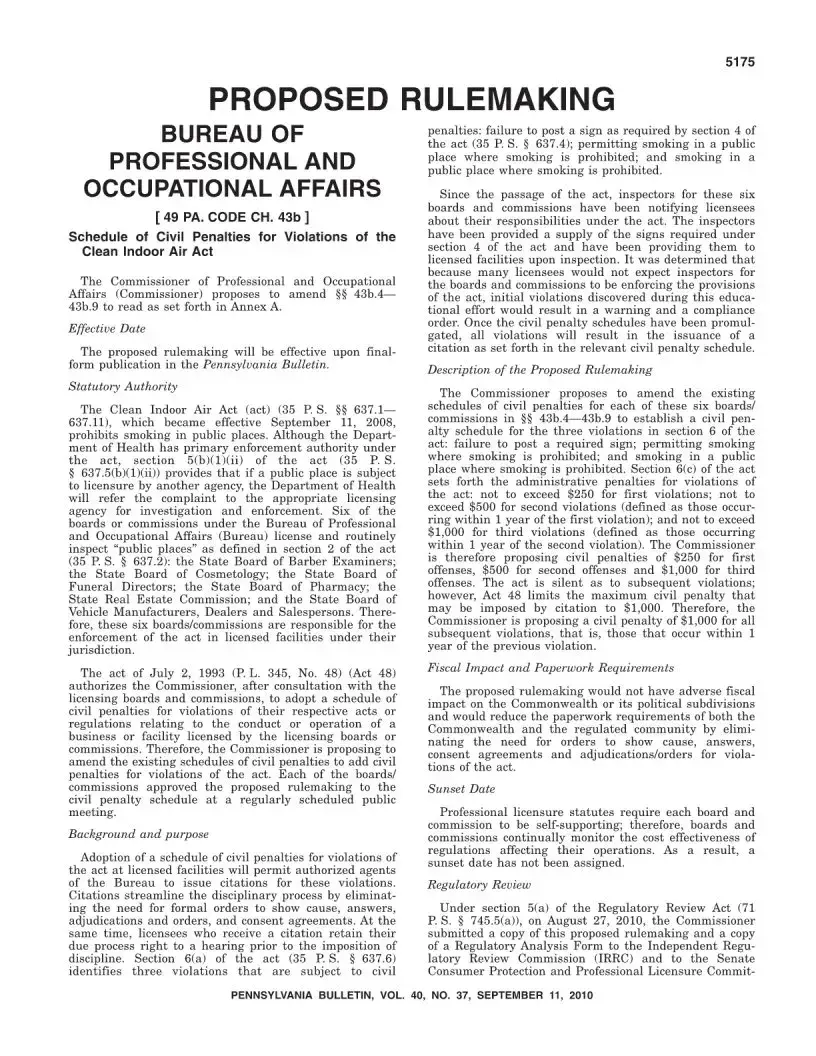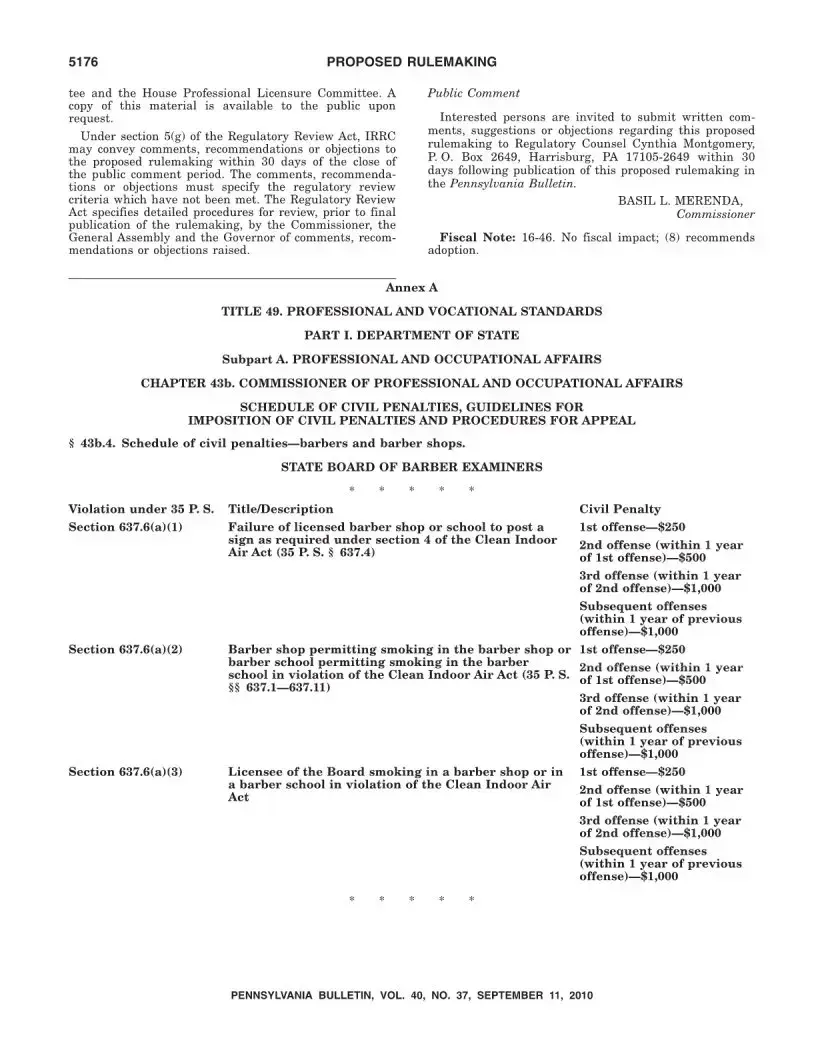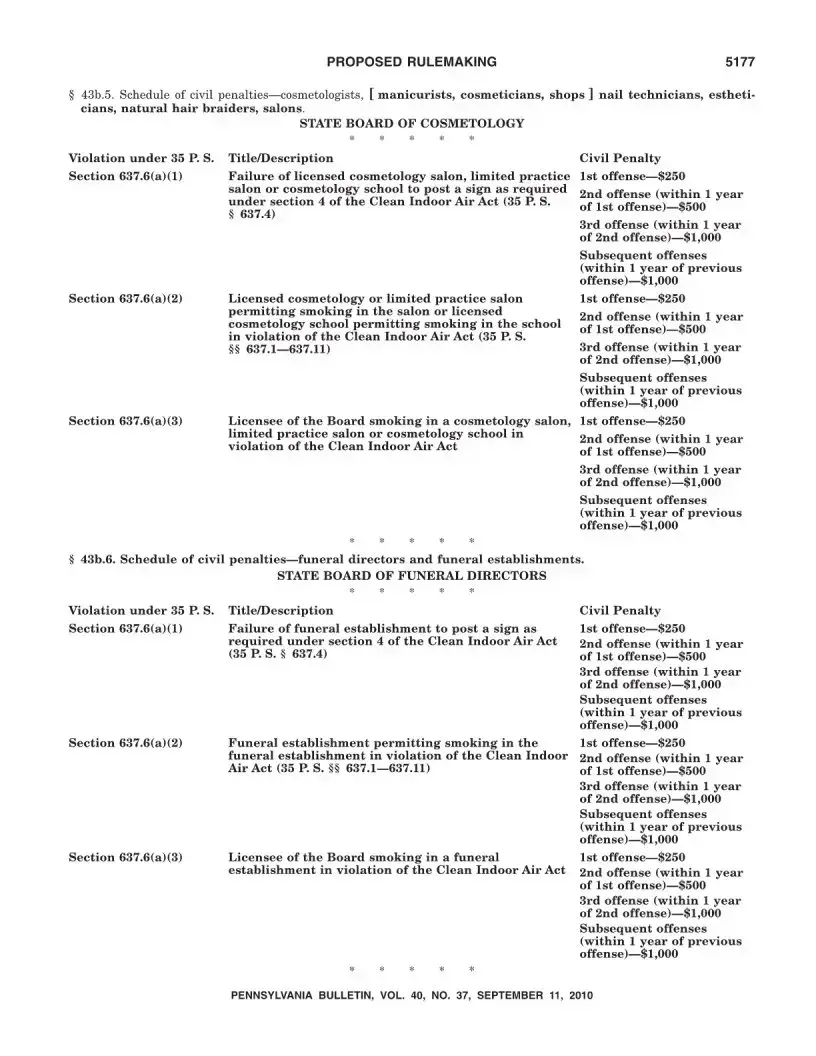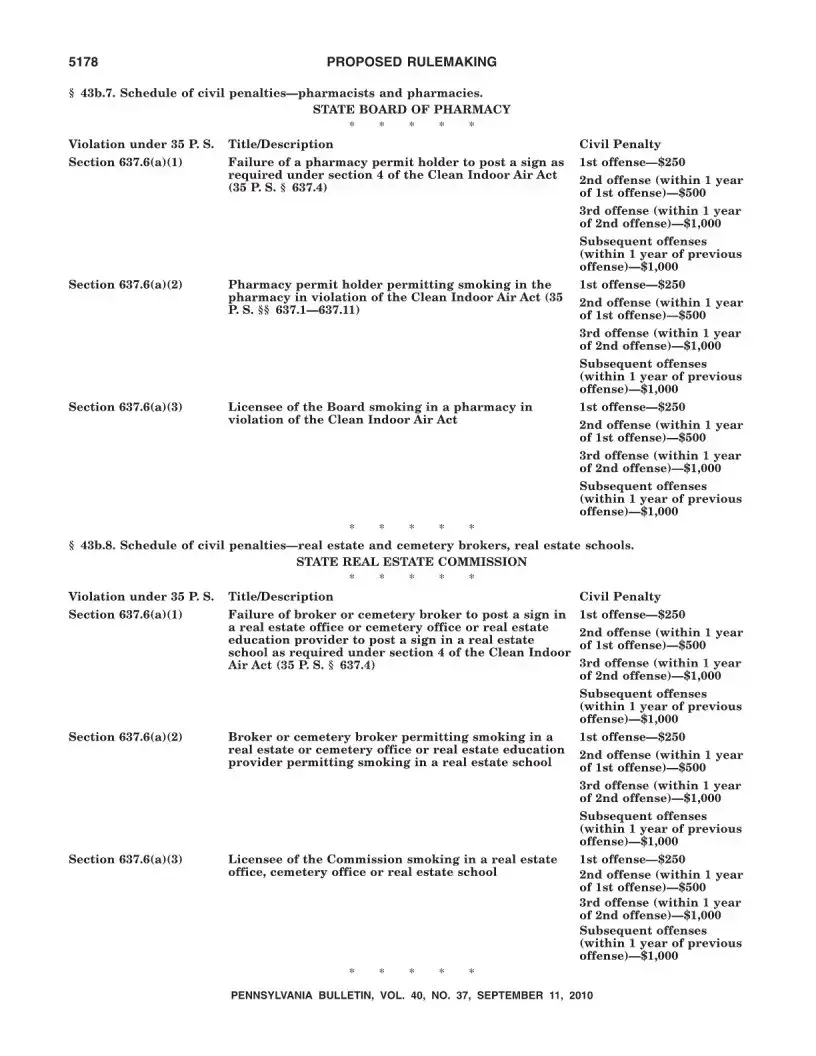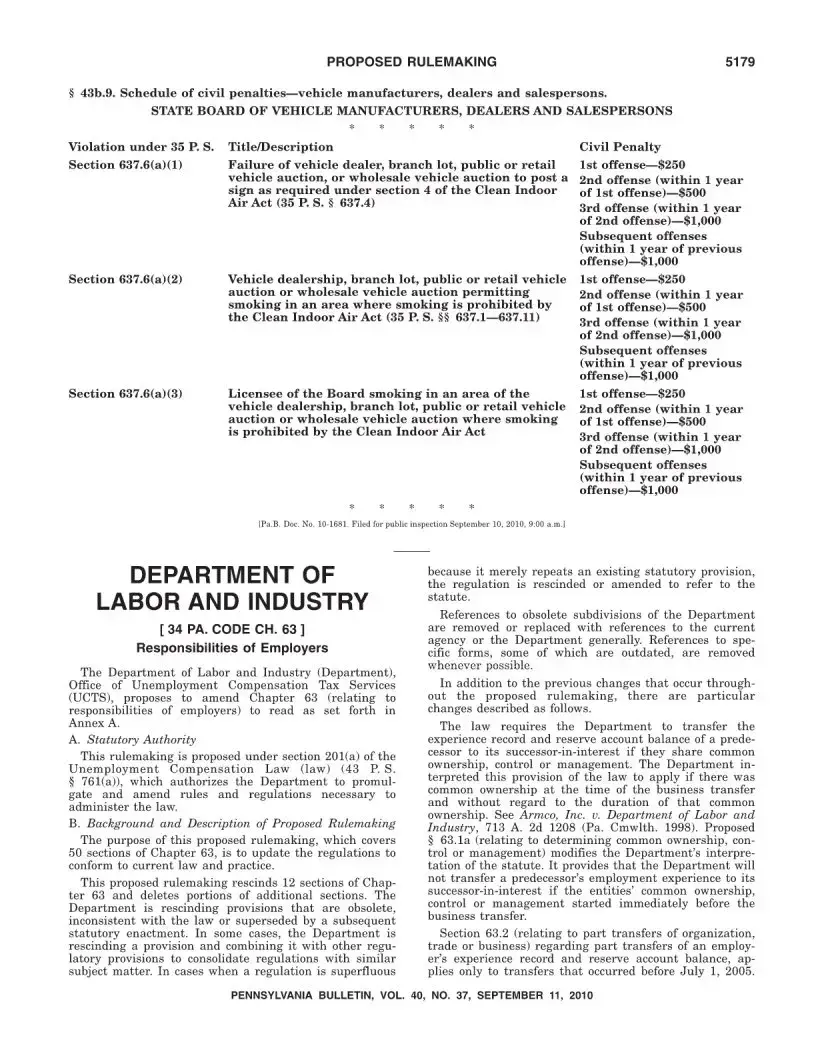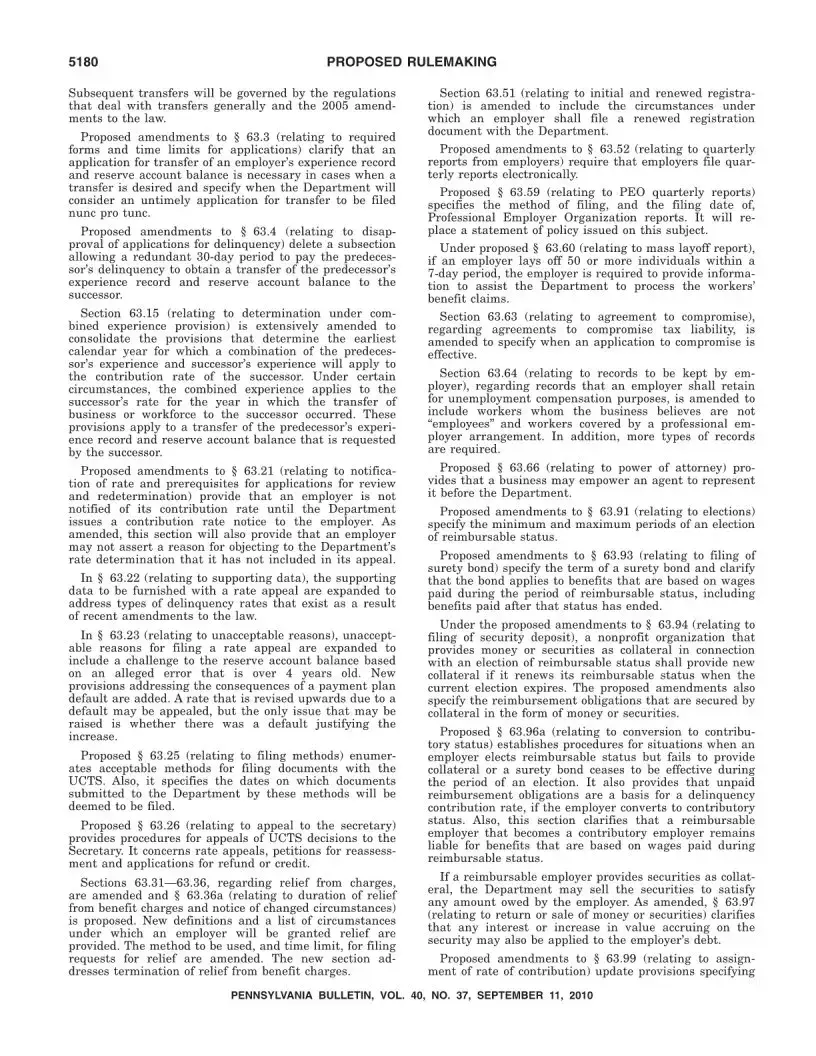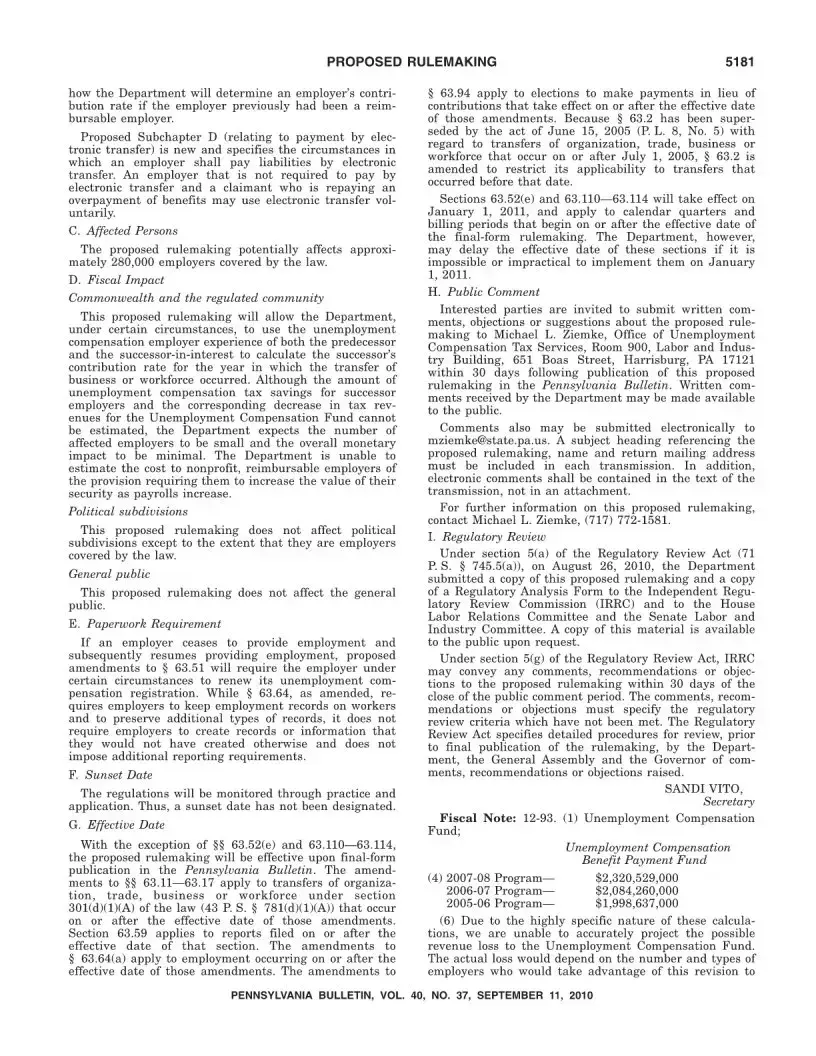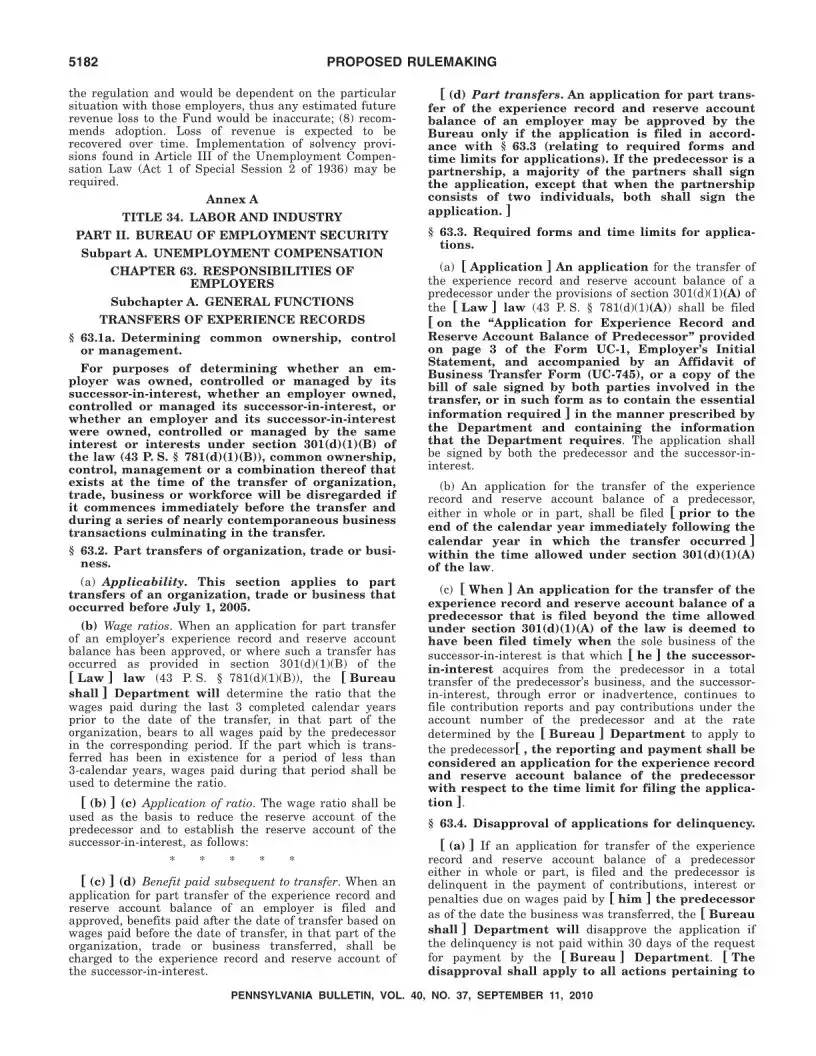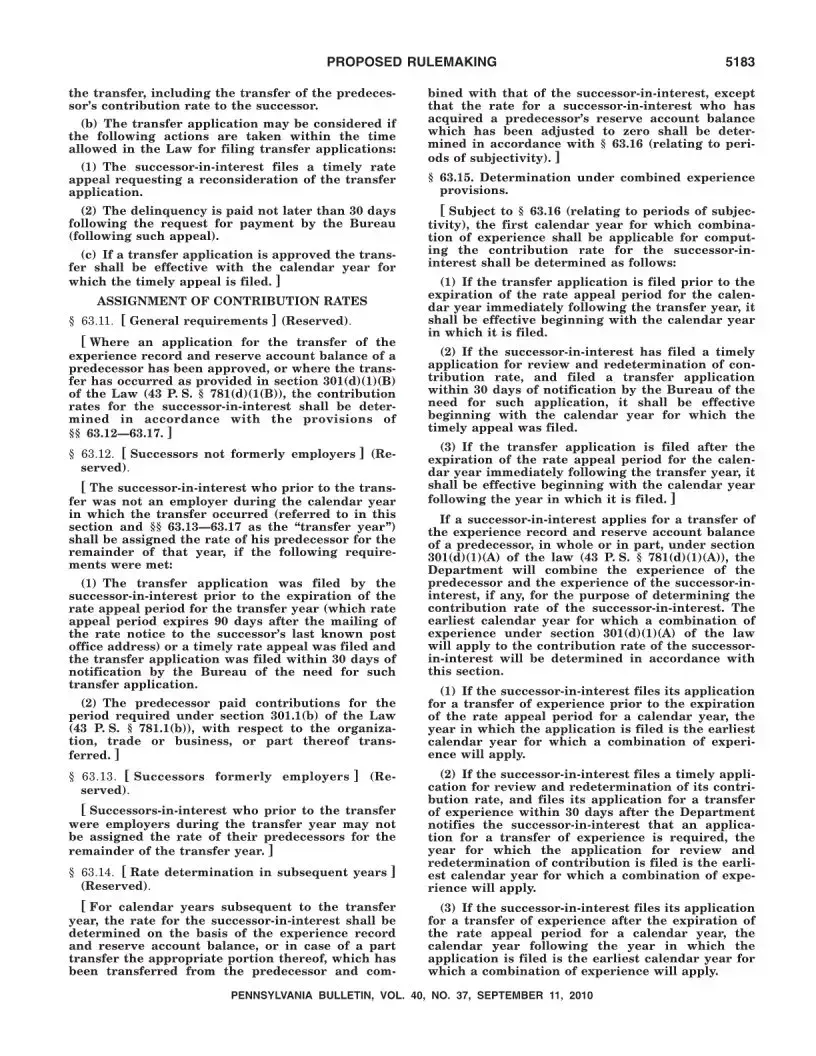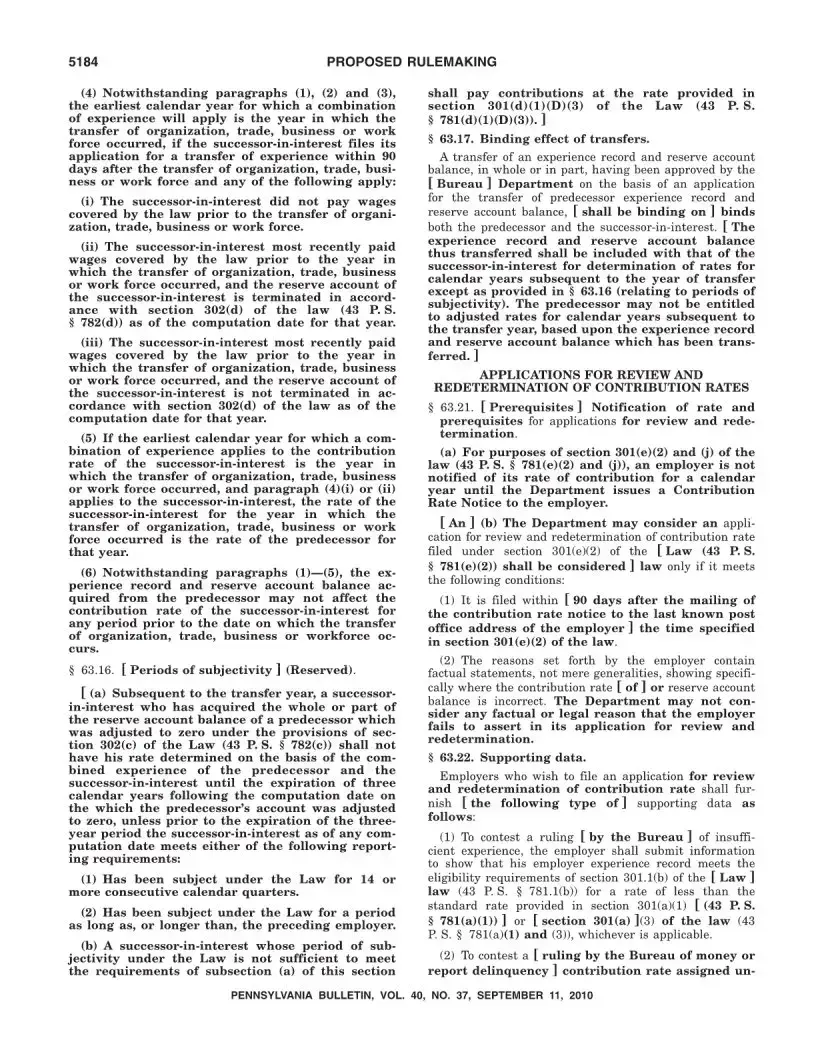What is the Uc 44Fr form?
The Uc 44Fr form is a proposed rulemaking document that outlines civil penalties for violations of the Clean Indoor Air Act in Pennsylvania. The Bureau of Professional and Occupational Affairs is looking to amend existing regulations to establish a consistent schedule of penalties for certain violations related to smoking in public places. This form serves to inform stakeholders about the proposed changes and the rationales behind them.
What types of violations are covered under the Uc 44Fr form?
The Uc 44Fr form addresses three specific violations under the Clean Indoor Air Act: failing to post required signage indicating smoking restrictions, allowing smoking in areas where it is prohibited, and smoking in those same prohibited areas. Each of these violations is subject to civil penalties, which the form details, reflecting the seriousness of compliance in maintaining smoke-free public spaces.
What are the proposed penalties for violations?
The proposed rulemaking establishes a tiered penalty system for violations. A first violation could result in a fine of up to $250. A second violation, occurring within one year of the first, may incur a penalty of up to $500. Third violations, also within a year of the second, can lead to fines reaching $1,000. For subsequent violations within one year of the last, the penalty remains capped at $1,000. This structure encourages compliance while providing a clear understanding of potential consequences.
When will the proposed rulemaking take effect?
The proposed rulemaking will take effect upon final form publication in the Pennsylvania Bulletin. This means that after the appropriate legislative and regulatory processes are completed, the rules can be enforced. Stakeholders should monitor these developments to understand when compliance becomes mandatory and to prepare accordingly.

